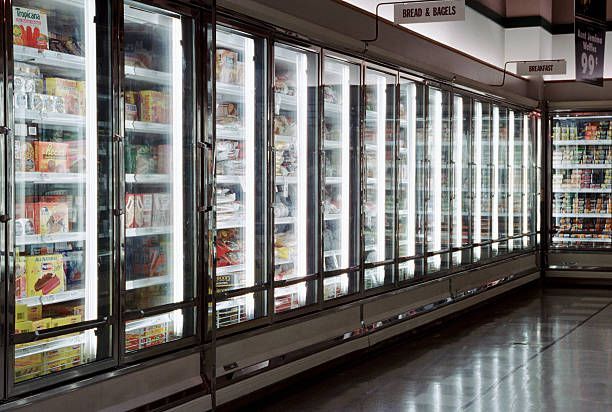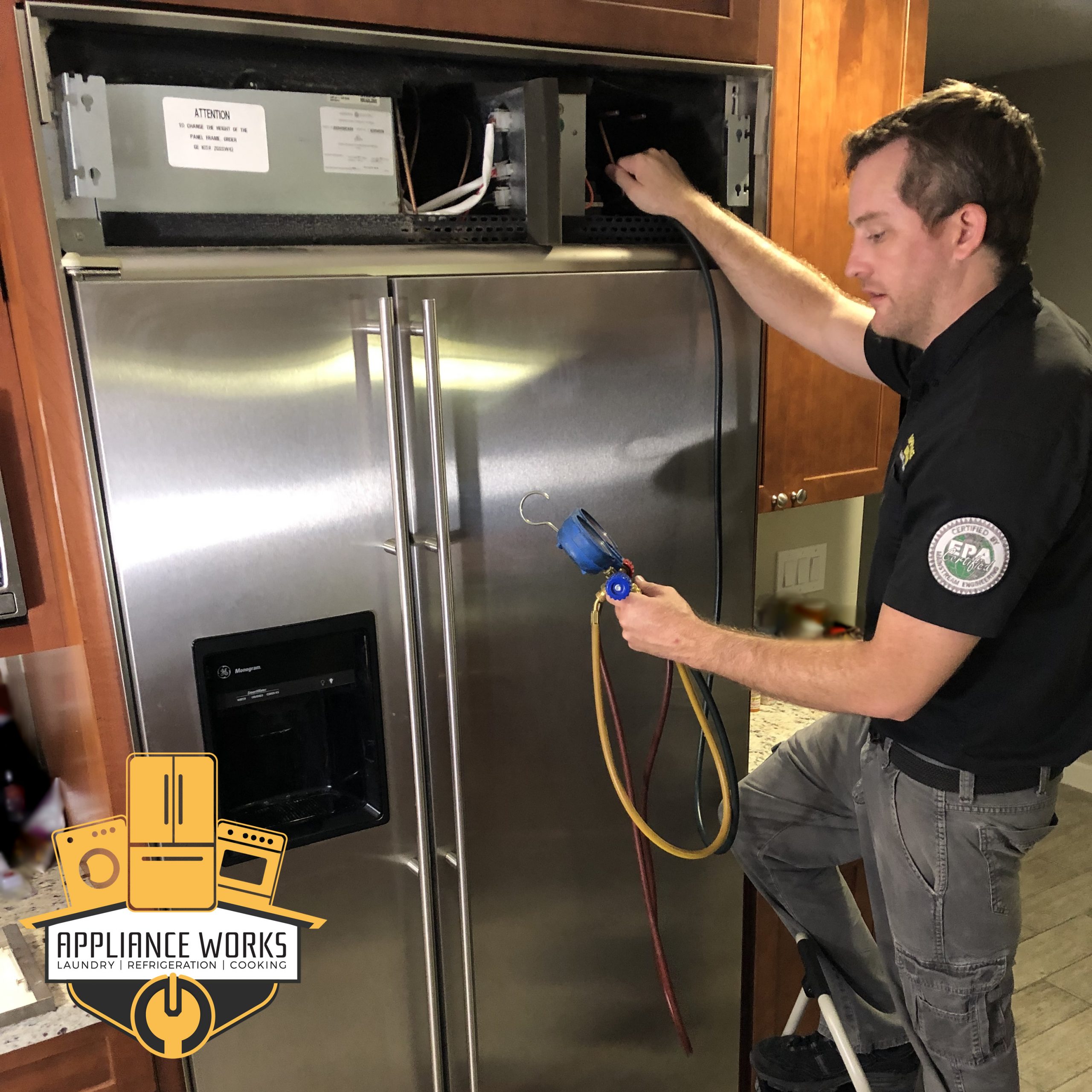Extend the Life of Your Kitchen Gear with Help from Dependable Appliance For SubZero Freezer Repair
Extend the Life of Your Kitchen Gear with Help from Dependable Appliance For SubZero Freezer Repair
Blog Article
The Ultimate Guide to Do It Yourself Device Repair Service Techniques
From fridges to dishwashing machines, comprehending just how to troubleshoot and fix these gadgets can conserve you time and money. Are you all set to uncover necessary methods that will encourage you to deal with repair work confidently?
Understanding Typical Appliance Troubles
When you depend on your home appliances, it can be discouraging when they all of a sudden stop functioning or act up. Recognizing common device troubles can assist you repair issues successfully.
If your oven isn't heating, defective components or thermostat problems could be to blame,. Dishwashers frequently experience problems with water drainage, so make certain the filter is clean and the drain tube isn't kinked.
Likewise, pay attention for uncommon sounds; they often suggest mechanical issues. By identifying these indicators, you can conserve time and potentially prevent pricey repairs. A little understanding goes a lengthy method in keeping your home appliances, so remain notified to maintain every little thing running efficiently.
Important Devices for DIY Services
Before diving into do it yourself home appliance repair work, it is essential to collect the right tools to guarantee the procedure goes efficiently. Begin with an excellent set of screwdrivers, including both flathead and Phillips, as they're important for opening up most home appliances. You'll additionally want a set of pliers for gripping and turning cords or little components.
Don't fail to remember a multimeter; it aids you examination electrical parts and identify problems successfully. An outlet collection comes in handy for loosening or tightening up bolts, while an utility blade can be useful for reducing cables or opening up product packaging.
Lastly, take into consideration having a flashlight on hand to brighten dark rooms inside your appliances. With these important tools, you'll be well-appointed to tackle numerous repair services, conserving both money and time. Gather your gear and obtain ready to roll up your sleeves!
Security First: Preventative Measures to Take
Prior to you start any type of home appliance fixing, it's important to prioritize security. Ensure you put on personal protective tools, separate the power resource, and maintain your workspace arranged. These easy safety measures can assist avoid crashes and assure a smoother repair work process.

Personal Protective Tools
Safety gear is an important component of any kind of do it yourself home appliance repair work project. You ought to always put on safety goggles to safeguard your eyes from dirt and particles. A sturdy pair of handwear covers will certainly secure your hands from sharp sides and harmful materials. Take into consideration utilizing a mask if you're dealing with chemicals or dust, guaranteeing you breathe safely while functioning. Steel-toed boots are likewise a wise selection, especially when lifting heavy home appliances. Don't neglect to put on lengthy sleeves and trousers to secure your skin from prospective injuries. By prioritizing personal protective equipment, you'll substantially reduce the danger of injuries and mishaps. Bear in mind, being prepared with the right equipment keeps you secure and concentrated on finishing your repair service successfully.
Power Source Disconnection
To assure a risk-free DIY home appliance fixing, detaching the source of power is necessary. Prior to you begin any type of job, you should transform or disconnect the home appliance off the breaker. This straightforward step avoids electrical shocks and assurances that you can concentrate on the fixing without fretting concerning unexpected activation. Constantly ascertain that the device is off by checking it with a voltage tester. If you're taking care of larger appliances, like a washing machine or dryer, ensure to safeguard the power cord and stay clear of any call with water. Remember, security! When you're certain that the power is detached, you can confidently wage your repair work, knowing you have actually taken the necessary precautions to shield on your own.
Work Location Company
A well-organized job area can make all the difference in your DIY device repair service project. Beginning by clearing your work space of clutter to protect against distractions and crashes. A tidy room not only improves efficiency yet also keeps you safe while you work on your appliance repair service.
Step-by-Step Guide for Fridge Repairs
When your fridge starts breaking down, it can be aggravating, but tackling the problem on your own can save you money and time. Disconnect the fridge to ensure safety. Look for typical issues like temperature level fluctuations or unusual sounds. If it's not cooling down, examine the thermostat setups; they could be set too expensive. Next off, clean the condenser coils, which commonly collect dirt and particles. For a loud refrigerator, check the follower and validate it's not blocked.
If there's water merging within, inspect the door seals for damages or dust, and tidy them if required. For ice buildup, clear the defrost drainpipe. Plug the fridge back in and monitor it for a few hours when you've dealt with the issue. If the issue continues, you might need to change a malfunctioning component, like the compressor or fan motor. Bear in mind, don't think twice to get in touch with the manual or seek expert aid if needed.
Dealing With Cleaning Maker Issues
Just like refrigerators, washing devices can provide their very own collection of obstacles, yet many issues can be resolved with a bit of troubleshooting. If your device will not begin, examine the power cable and validate it's connected in.
If your clothes aren't getting clean, take into consideration the water level and cleaning agent type; utilizing way too much detergent can create excess suds, influencing efficiency. For leaks, check out the pipes for splits or loose links. Tightening up these can often resolve the problem. Routine maintenance, like cleaning the filter, can avoid numerous issues from occurring. Bear in mind, a little troubleshooting goes a long way in maintaining your washing maker running efficiently.
Fixing Ovens and Stoves
Exactly how can you troubleshoot usual problems with your stove or range? Beginning by inspecting the power supply.
If your oven isn't home heating, inspect the temperature level settings and validate the door seals securely. If it's damaged., a faulty home heating element might additionally be the offender; you could require to replace it.
For irregular food preparation, turn your frying pans and think about using a stove thermometer to validate precise temperature levels. If you hear uncommon sounds or smell gas, turn off the home appliance immediately and speak with a specialist. By adhering to these steps, you can recognize and deal with lots of usual stove and range problems successfully.
Repairing Dishwashing Machines Facilitated
When your dish washer starts acting up, it can my latest blog post be discouraging, yet addressing usual problems isn't as hard as it appears. You'll find out detailed troubleshooting approaches that will assist you determine the trouble, together with the important tools you'll require to take on fixings on your own. Allow's make repairing your dish washer a wind!
Usual Dishwashing Machine Problems
While dish washers are created to make your life much easier, they can often encounter typical issues that leave you feeling frustrated. One frequent trouble is inadequate cleansing performance; this frequently happens due to clogged spray arms or unclean filters. You may likewise discover water pooling near the bottom, which can suggest a malfunctioning drain or a kinked hose. It can be a basic issue with the lock system or door seal if your dishwasher's door will not lock. Additionally, weird sounds can indicate loose components or worn-out components. If you smell something odd, it could be time to inspect for food particles or a malfunctioning motor. Addressing these concerns early can conserve you time and problem later on (Best Sub-Zero Service Near You Dependable Refrigeration & Appliance Repair Service).

Detailed Troubleshooting
Prior to diving right into fixings, it's essential to identify the particular concern your dishwasher is dealing with. If your dish washer will not start, inspect the power supply and door latch. By systematically attending to each possible concern, you can pinpoint the issue and take the needed actions to repair it, making your dishwasher feature like new again.
Necessary Repair Tools
Having the right tools at hand can make all the distinction when fixing your dish washer. Beginning with a screwdriver collection, as you'll often require both Phillips and flathead alternatives. A multimeter's crucial for detecting electric issues, while pliers can help you grip and manipulate different elements. Do not neglect a pail or towels for any type of water spills during fixings.
If you're tackling obstructions, a drain serpent or a wet/dry vacuum will certainly be very useful. You may also desire a level to assure your dish washer's appropriately lined up. Security gear like gloves and safety glasses will shield you while you work. With these important devices, you'll be well-appointed to tackle any type of dishwasher fixing difficulty that comes your way.
Often Asked Inquiries
Exactly how Do I Figure out if an Appliance Is Well Worth Repairing?
To determine if an appliance's worth fixing, consider its age, fixing expenses, and current worth. If repair services surpass half the replacement expense, you may intend to spend in a new version rather.
Can I Find Replacement Components In Your Area for My Device?
Yes, you can usually locate substitute parts locally for your appliance. Check hardware stores, device fixing stores, or neighborhood classifieds. Do not fail to remember to bring the design number to guarantee you obtain the proper component!
When Fixing Home Appliances?, what Common Mistakes Should I Avoid.
When fixing devices, prevent rushing through diagnostics, overlooking safety and security precautions, or using incorrect devices. Do not avoid checking out manuals or watching tutorials; they provide essential support. Hold your horses and complete to ensure successful repairs and protect against additional damage.
How much time Does a Normal DIY Appliance Repair Take?
A typical do it yourself device repair service normally takes one to three hours, relying on the intricacy. You'll intend to collect your materials and tools first, and adhere to guidelines meticulously to stay pop over to this web-site clear of unneeded hold-ups.
Exist Any Kind Of Service Warranties for Do It Yourself Device Repairs?
When you take on DIY appliance repairs, warranties normally do not cover your work. Nonetheless, some manufacturers might honor guarantees for components you replace. Constantly examine your appliance's warranty terms prior to starting any fixings to avoid problems.
Prior to diving right into Do it yourself home appliance repair work, it's vital to gather the right devices to guarantee the procedure goes smoothly.Prior to you begin any kind of appliance repair service, it's essential to focus on safety and security.To ensure a risk-free DIY home appliance repair work, disconnecting the power resource is essential.An efficient job location can make all the difference in your Do it yourself device repair project. Always check your appliance's service see this warranty terms prior to beginning any kind of fixings to stay clear of concerns.
Report this page